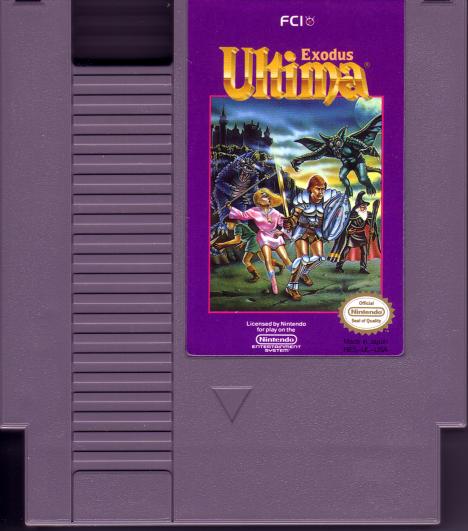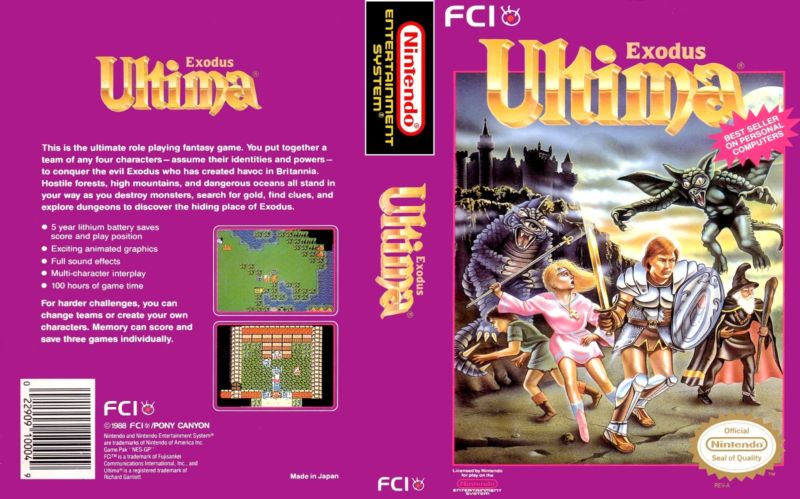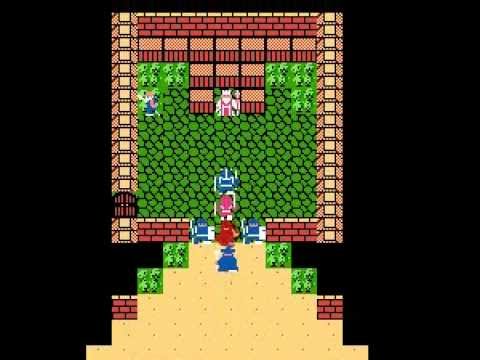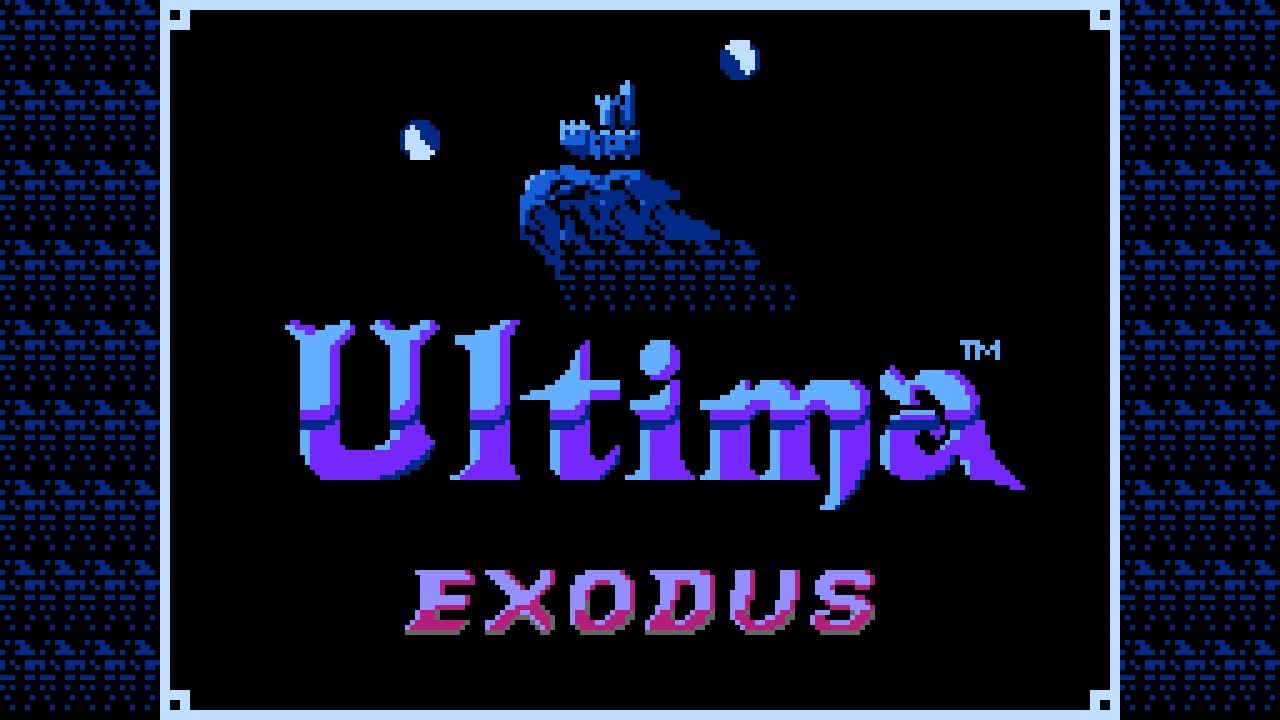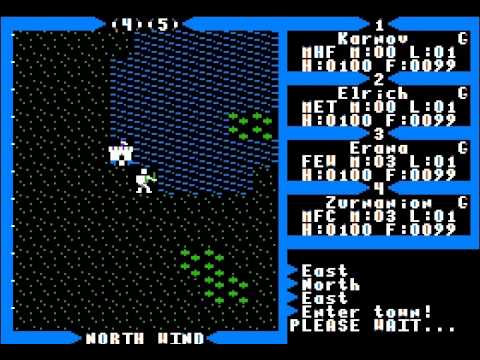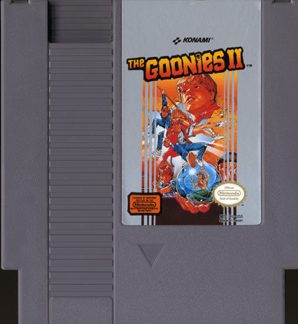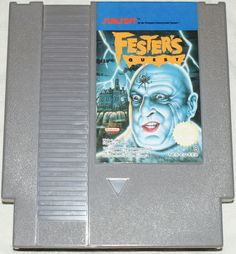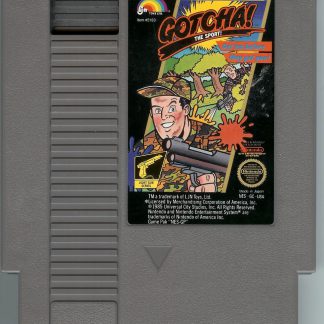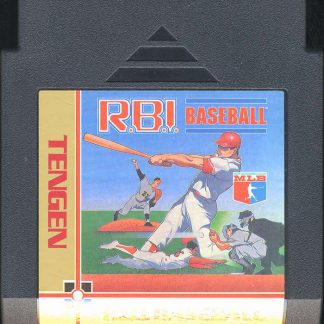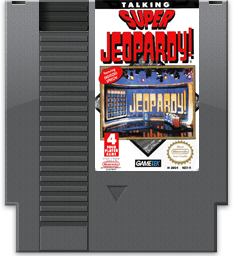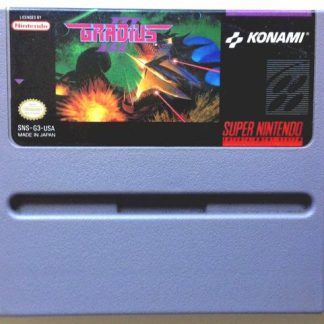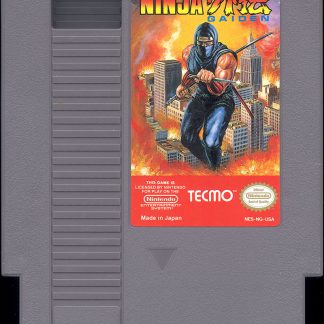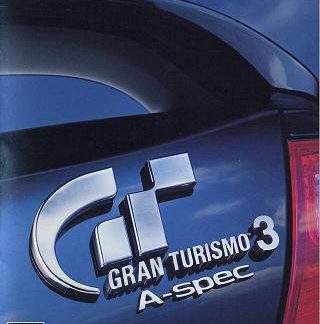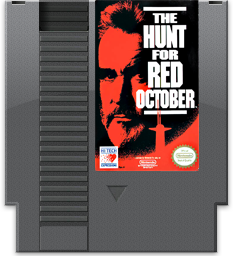Description
Ultima Exodus NES Game Cartridge
Ultima III: Exodus was released for the NES in 1989, being the third video game in the series of Ultima games. Richard Garriott developed the game and Origin Systems published it. The game was originally released for Apple II but it was later ported to thirteen other gaming platforms, which included the Famicom/NES remake. This version of the game has graphics that were modified, a newer soundtrack, gameplay alterations that were considerable, dialogue that was significantly expanded, a new interface for the menu, and added a sequence at the game’s end after the player defeats Exodus. It also only comes with a little instruction booklet instead of the manuals and map.
Exodus has been given credit as one of the games that put down the foundation in the RPG genre and influenced games such as Final Fantasy and Dragon Quest. The game itself was influenced by the Wizadry game series, which has Richard Garriot’s inspiration for the combat in the game that was party base.
After the previous game Ultima II being set on planet Earth, Ultima III’s story about Exodus will center on a journey back into Sosaria, which is the world of Ultima. The mission of the player is destroying the evil Minax and Mondain’s final remnant. This game gets its name for the main villain Exodus, who was created by Minax and Mondain. The series describes Exodus as neither machine nor human. Though the game’s cover shows a figure that looks demonic, Exodus ends up being something similar to a computer, or some kind of artificial intelligence. To defeat Exodus, the player will need to obtain four magical cards and place them, in a certain order, inside the mainframe.
The game had revolutionary graphics during its time, also being one of the first RPGs to show animated characters. It differs from the previous Ultima games because the player now directs the actions of a four character party instead of just one character. While playing, the characters will be represented as single player icons and will move together as one. During the battle mode, however, every character will be represented separately onto a battle screen in which the player will alternate commands between every character in an order, which is then followed by every enemy character taking a turn.
Because of the game alternating turns with the player’s characters and the enemy characters, the player will need to understand magic and weapon commands and try to tactically employ them so they can defeat the enemies. This is different from the first two games where the player simply traded blows with a single enemy on the game’s main map until the opponent or player themselves were defeated. The enemies located on the game’s overworld map are able to be seen, giving the player a chance to temporarily avoid them. Enemies in the dungeons, however, will appear randomly and not give and forewarning.
The player’s four character party that is used during the game will be chosen when the game starts. There will be a total of 11 classes the player can choose from. These classes are a Fighter, a Paladin, a Cleric, a Wizard, a Ranger, a Thief, a Barbarian, a Lark, an Illusionist, a Druid, and an Alchemist. Every class will have a specific race among the game’s five races. Each class will have a default race that will be recommended to the player, but can be modified along with the attribute points for every character for Wisdom, Intelligence, Dexterity, and Strength. A race will determine the character’s limitations on the max stat growth. Specific spells will not be available for specific races that will be limited on their max Intelligence and Wisdom stats, therefore a player will need to be wise and figure out which races will be best for their mages before starting.
Generally, all classes for the characters will be built around the four main classes and will have very little differences. These four main classes are the Fighter, the Cleric, the Wizard, and the Thief. The Fighter will be strong in defense and melee, but with an exception of a Ranger, have no abilities or spells, and will be able to equip most weapons and armor. The Thief class will be good at resisting the traps that are inside dungeons or inside chests and will be limited on the armor and weapons they can equip. The Cleric class will have healing spells along with spells that will be strong against the undead enemies, but will be limited to leather/cloth armor and maces/staffs. The Wizard class will have the strong offensive spells but will be limited to staffs and cloth armor.
Every character will start at Level One and will increase individually. While enemies are beaten and the game is progressing, the player’s characters will increase in level by gaining experience points. The enemies that are more challenging, like sea monsters or dragons, will give out more experience points than enemies that are easier like skeletons, goblins, or orcs. This is for letting characters increase their levels somewhat evenly, with stronger and bigger enemies appearing whenever one character reaches a certain level. A common thing among a Cleric and Wizard is that they tend to out-level the melee class types because their attacks have an area of effect and their ranged attacks give them the ability of killing enemies a good while before a melee type class can even be near an enemy.
The max effective level will be 25 for characters. Levels will still increase beyond 25, but the characters’ HP will be fixed at a total of 2550. The max HP for characters are able to be calculated by using a specific formula. The formula is HP = 100 * L + 50, with L being the character’s current level. Although not necessary, it is recommended for a player to level up their characters to maximum for having the highest chance to defeat Exodus. When enough experience has been gained by a character, they player will need to talk, or Transact, with someone named Lord British to level up that character. The Mark of Kings will need to be gained by the characters in order to increase their HP above 550.
Food is a key item a player will need to have during the game. The characters will need to buy food regularly from a grocery store. If food is completely depleted from a character, they will begin to take damage every turn, similar to being poisoned. The food will deplete very fast when a player is traveling outside on the overworld map and will be depleted slowly, or not depleted at all, while inside a dungeon. While inside a dungeon, however, gremlins can steal a characters food. If the player uses ships or horses for transportation, the food depletion rate will slow down compared to just walking.
Other than being able to talk with the townspeople, there will be other commands the player can use on the people. Some commands the player is able to use are bribe, steal, and fight. A player can bribe specific guards to leave their post when it is needed. The steal is able to be used on the townspeople and some of the enemies. There is a possibility of having conflict with the townspeople if the player is caught. The player can select to fight one of the townspeople, but doing so will prompt guards to go after their characters. These guards always come in a party with eight people and will be very hard to defeat. They also carry hardly any treasure. The player has the choice to get in a fight with Lord British, but he is unable to be killed, and will result in a long battle that a player will eventually lose. The player can temporarily kill Lord British by using a cannon from their ship inside the moat on the castle, but exiting the castle and then re-entering it will restore him.
The first two Ultima games had dungeons that were first person and were wire framed, but Exodus dungeons will have dungeons with a solid 3D appearance and are mixed into the plot of the game. The dungeons will be foreboding mazes and might take some time to traverse, but will be necessary to get specific marks that will be needed to complete the game. Every dungeon will have 8 levels, with the deeper a player goes, the harder the enemies will be. The monsters inside the dungeons that appear randomly, however, will not be based on the character levels like the monsters on the game’s overworld map. Instead, it is based on what level the player is exploring, which means going the player goes too deep inside specific dungeons, it could be too difficult for the characters that have low levels.
Many chests can be found inside dungeons and can have armor, weapons, or gold. A lot of the chests will be trapped. Besides the marks and chests that are found inside dungeons, there are also fountains that can be found. Some of the mountains will heal, some will cure, and some will poison. A player can look at Gems and will allow them to see the dungeon’s level map. Spells that can cast light or torches will be necessary for the player to see inside the dungeons. The marks that are most valuable are able to be found in the dungeons’ lowest levels.
The three modes a player can travel are on foot, a horse, or a boat. Going around the game on foot will be slow and will cause monsters to catch up to the player often. Using a horse will give the player an advantage of being able to move faster and consume less food. This will make escaping from the unwanted fights a little easier. A horse is able to be bought from some towns and will cost 800 gold. Obtaining a boat can get tricky. It will require a player to reach a specific level so pirate ships will start to appear. When the player sights a ship, it will come toward the characters and fight them. When defeating the pirates, the player then obtains the boat. Getting a boat will be necessary to get to Ambrosia, which is the underworld. It will eventually be necessary to get to Ambrosia to beat the game.
By not letting the player be able to see what is behind walls, mountain peaks, and forests, the maps for the overland will have many little surprises like informants, secret paths, and hidden treasure. Completing the game will require a player to obtain all four of the marks and all four of the prayer cards. Once the player gets to the altar, the cards will need to be inserted in a specific order. The player will then fight Exodus and will need to defeat him.
UPC: 0-22909-10004-9
Platform: NES
Players: 1
Condition: Used
Genre: Role-Playing
Region: NTSC (North America)
Rating: Everyone

